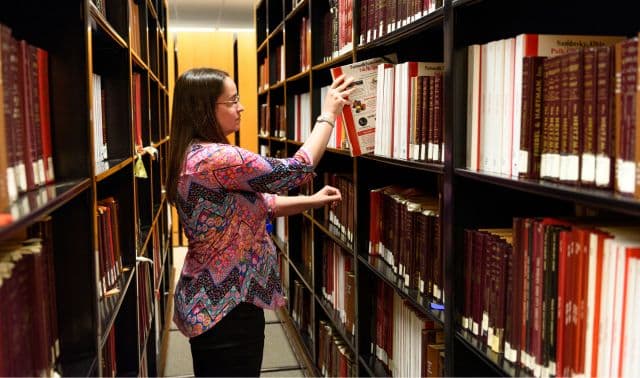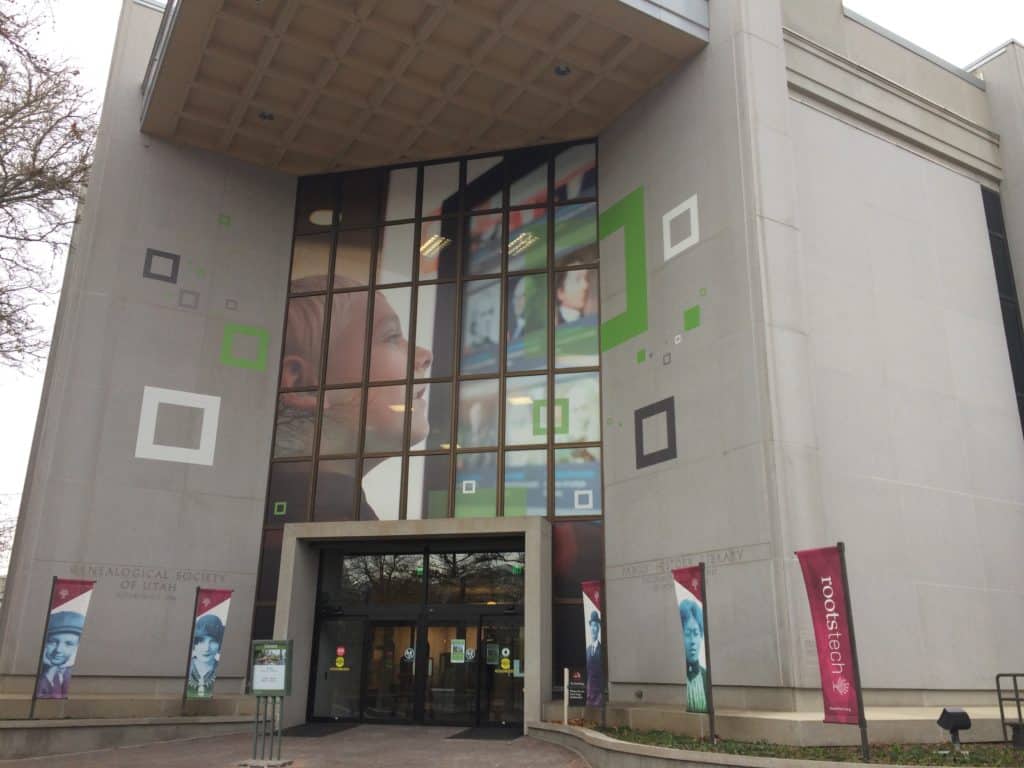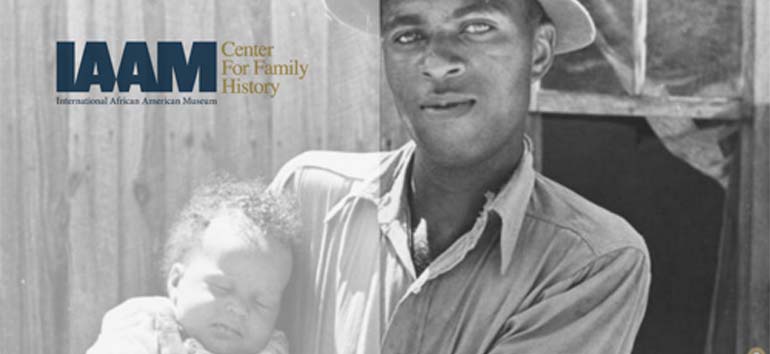Sign up for the Family Tree Newsletter! Plus, you’ll receive our 10 Essential Genealogy Research Forms PDF as a special thank you.
Get Your Free Genealogy Forms
"*" indicates required fields

Genealogy enthusiasts often dream of being able to walk in an ancestor’s footsteps—to see what their ancestors saw, to touch what their ancestors touched, and to hear sounds that their ancestors heard.
However, physically traveling to an ancestral homeland or a city where ancestors lived is not always possible. Regardless of the reason one cannot travel (physical limitations, monetary limitations or a pandemic), technology allows genealogy researchers to “travel” the world and still connect with their ancestral roots. Experiencing an ancestor’s life sometimes requires a little “out-of-the-box” or creative thinking.
Virtual travel is not the same as being in the ancestral homeland in person, but that’s okay. Technology offers us the ability to connect with our ancestors in a unique way not available in the past. Let’s start traveling, but don’t worry—no passport required.
1. Find Places with Google Street View
You’re probably already familiar with Google Maps and might use it to get directions. But as virtual travelers, we benefit from another great feature: Google’s Street View, which lets users view locations from the street level. To access Street View, click the small person icon from the Google Maps home page, then place it next to a site you’d like to see. Or enter an address, then click the featured image.
From an address, you’re virtually transported to the street. You can turn left or right and even zoom in on a particular feature. The tool has its limitations, but being able to view an area—even one significantly different than it was historically—from multiple viewpoints can be a great advantage.
Consider Jacob Jacobs (1829–1894) who lived in New York City in the 1880s and 1890s. Genealogy research revealed he lived on Broome Street on the Lower East side of Manhattan. Using Street View, I can virtually “walk” along modern Broome Street, moving house by house. Though the tenement building where the Jacobs family lived has since been demolished, we can stand where it once stood. We can wander the neighborhood streets and gain a perspective on distances, such as from the Jacobs home to the synagogue where they worshiped or to another family member’s house.
As well as being personally fulfilling, this new and deeper perspective will benefit future research, too. “Seeing” the area will give you ideas about social history you can research. How close was your ancestor’s home to a landmark, such as a river or lake? Was your ancestor’s neighborhood always so crowded (or so sparsely populated)? How might you study the history of your ancestor’s house?
2. Take Virtual Tours
Individual landmarks and tour companies have also found ways of bringing their experiences online. In fact, you can find virtual tours of cities, towns, museums and historic sites across the globe on YouTube (which is easy to navigate).
Many attractions host virtual tours on their own sites, too. An internet search for [location] + virtual tour is a good place to start. For example, if you’re interested exploring your ancestors’ hometown of Vilnius, Lithuania, search for “Vilnius, Lithuania Virtual Tour.” Results include “walking” tours of old town streets, plus virtual explorations of museums and historic churches—even of a palace.
In addition, national visitor and tourism bureaus will often showcase virtual tours of cities and sites offered in their countries. If you have Czech ancestors, look to high-res photos of landmarks (plus visitors’ guides) at Visit Czech Republic. And if you have Welsh ancestors, VisitWales offers virtual options, too.
Another fantastic option for virtual travel are guided tours through companies such as ToursByLocals. As the name suggests, this service’s main drawing point is that a local tour guide will walk you through an area or experience. ToursByLocals currently offers more than 140 virtual tours of places around the world, many of them private and more of them being added regularly. You can ask questions and interact with your guide, and select from driving tours, walking tours, regional cooking lessons and even tours of the guide’s home.
Road Scholars is another program offering virtual travel and educational opportunities around the world. Though they also offer in-person trips, Road Scholars’ “Adventures Online” are live, single- to multi-day virtual programs allowing for live interactions with your tour guide. Ask questions, see sites virtually and gain a new perspective on your ancestors’ lives.
You can also sample the area’s culture and history by “visiting” local museums. Many museums, both large and small, offer virtual tours and educational programs you can access from home. For example, the Down County Museum in Northern Ireland offers free virtual tours. With a virtual tour, you can learn about your Down County ancestors without leaving your couch.
If you can’t find a virtual tour that fits your needs, try reaching out to the local or regional travel bureau for assistance. They may be able to connect you with a local guide who can create a custom virtual experience for you.
3. Cook Family Recipes
Don’t overlook the power of food and its ability to enhance your virtual travel! A family’s culinary heritage is deeply rooted in its identity. Tasting and even cooking with the same flavors and foods of your ancestors is an excellent way to connect with past generations.
Even if your family didn’t pass down any culinary traditions, look for dishes at sites such as Heritage Recipes for inspiration, or find heritage cookbooks through booksellers, Google Books or the Internet Archive. You can also visit specialty markets to find traditional ingredients.
Many virtual tour guides are offering live cooking classes straight from their own kitchens. Search for options using search terms such as “Virtual Cooking Classes” plus the country or area you are interested in. Do you have Italian ancestors? Learn how to make tiramisu in a ToursByLocal guide’s home kitchen in Ravenna, Italy. Create a tasty dessert, eat, and learn more about Italian culture along the way.
4. Read and Watch History
This section was written by Sunny McClellan Morton, and a version of it appeared in the August 2010 issue of Family Tree Magazine.
Travel agents and guidebooks help visitors get the most out of their destinations. Similarly, libraries and archives offer tickets to fantastic armchair travel to your ancestor’s era. You can learn about his childhood, domestic life, military life, education, religion, work and immigration through books, videos, pictures and maps. (At most libraries, you can enjoy your virtual travel experience in air-conditioned comfort.)
Several great book series can introduce you to different time periods so you learn how your ancestors lived, worked and played in Colonial America or Victorian England.
Like your history with a side of popcorn? Head to the library’s video section. You may find documentaries that shed light on your family past. Search the library catalog for DVDs or videocassettes with keywords such as documentary Victorian or Civil War history. And look for documentaries through services such as PBS, the History Channel, or Netflix.
Online photograph collections at libraries and archives hold millions of images that can help your research even if they don’t depict your ancestors. They’ll give a contemporary look at neighborhoods, fashion trends, and other hallmarks of daily life.
Search websites of libraries and archives in your ancestor’s hometown for photo collections, Rice says. Or check the Library of Congress’ Prints and Photographs Division, which has 14 million digital images. Many other online photo archives even allow the public to upload their own pictures.
When searching for images, be as specific as possible. Search on names from your research, rather than general terms: surnames, hometowns, street names, churches, schools, hospitals, cemeteries, employers or civic organizations.
Old maps are yet another library resource that can guide you to your ancestors as sure as a modern GPS, with some detailed enough to show street names or even individual businesses. Look for Sanborn maps at the Library of Congress or state libraries and archives
Street and road atlases, topographic and land-use maps, and even historic aerial photographic maps exist in several formats. The Perry-Castañeda Library Map Collection displays thousands of historical and current maps online.
Last updated, December 2020.




